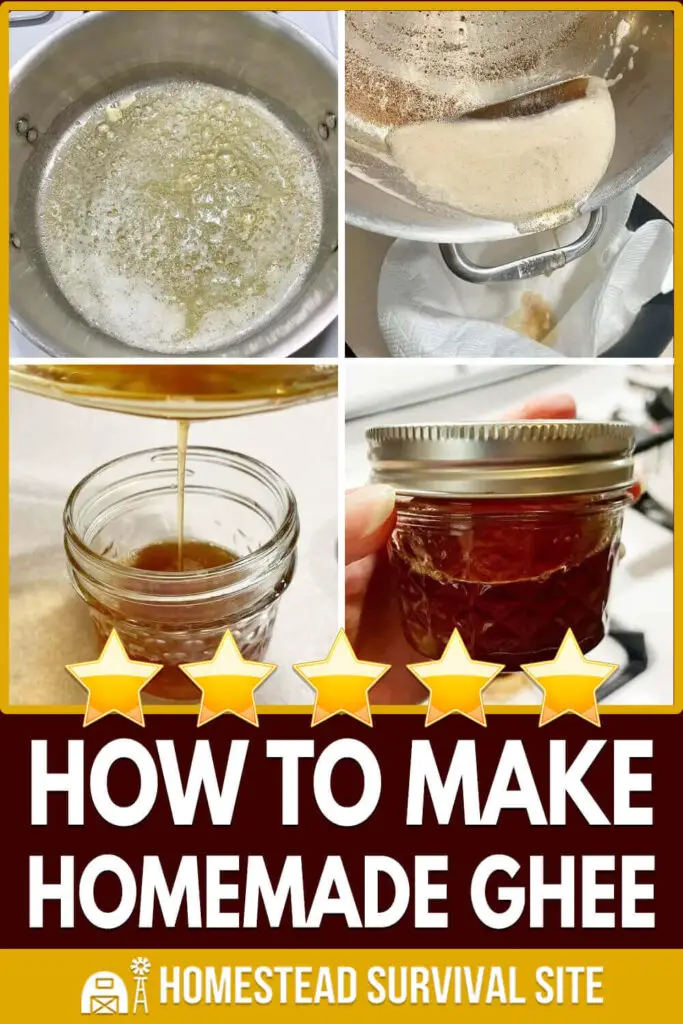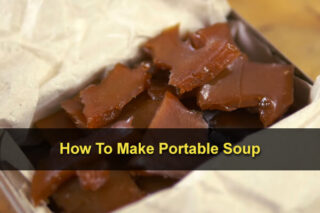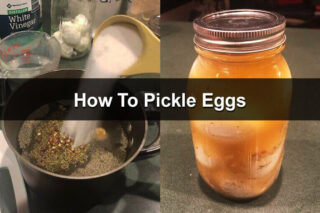Estimated reading time: 8 minutes
Ghee is a great item to keep in your pantry, especially if it is homemade. Originating from ancient India, ghee is commonly used in Middle Eastern cuisine. It is loved for its buttery flavor and high smoke point, which is 400 degrees Fahrenheit. This makes ghee great for high-heat cooking, especially since traditional butter can burn easily.
In this article, we will show you how to make your own ghee from butter. We will also dive into why ghee is so great to cook with. Not only is it delicious, but ghee is also shelf-stable!
Want to save this post for later? Click Here to Pin It On Pinterest!
How to Make Ghee
It is so easy to make ghee at home. All you need is a pan and a stick of butter.
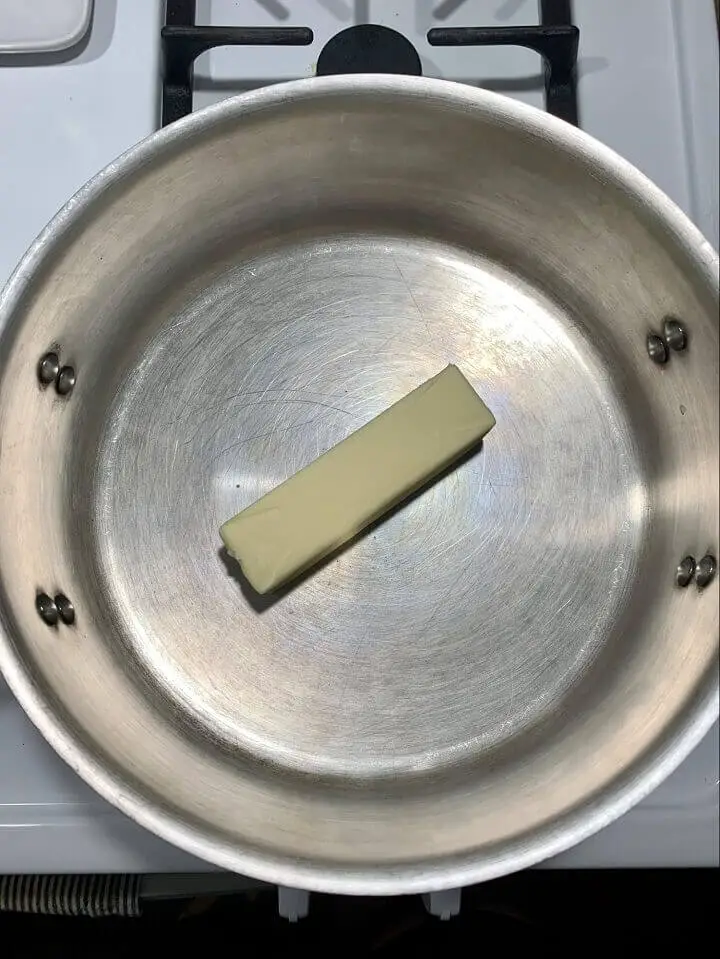
1. Begin by unwrapping a stick of butter and placing it in a pan. Turn on the heat to medium and allow the butter to melt. This will take about 2-3 minutes.
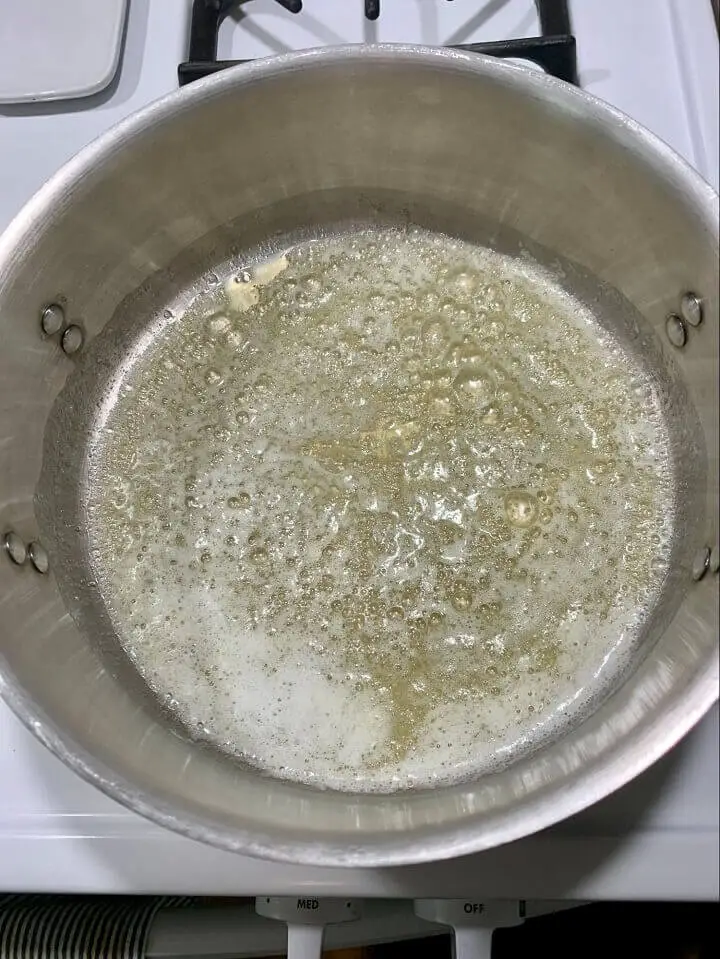
2. Once the butter is melted, it will begin to foam. You can skim the foam if you like, but it is not necessary. After the first foam, you may need to turn down the heat to medium-low. This will depend on how hot your stove gets.

3. Allow the butter to separate the milk solids from the ghee. This process is similar to making browned butter. At this stage, you want the milk solids to brown. Allow browning for 5-8 minutes.
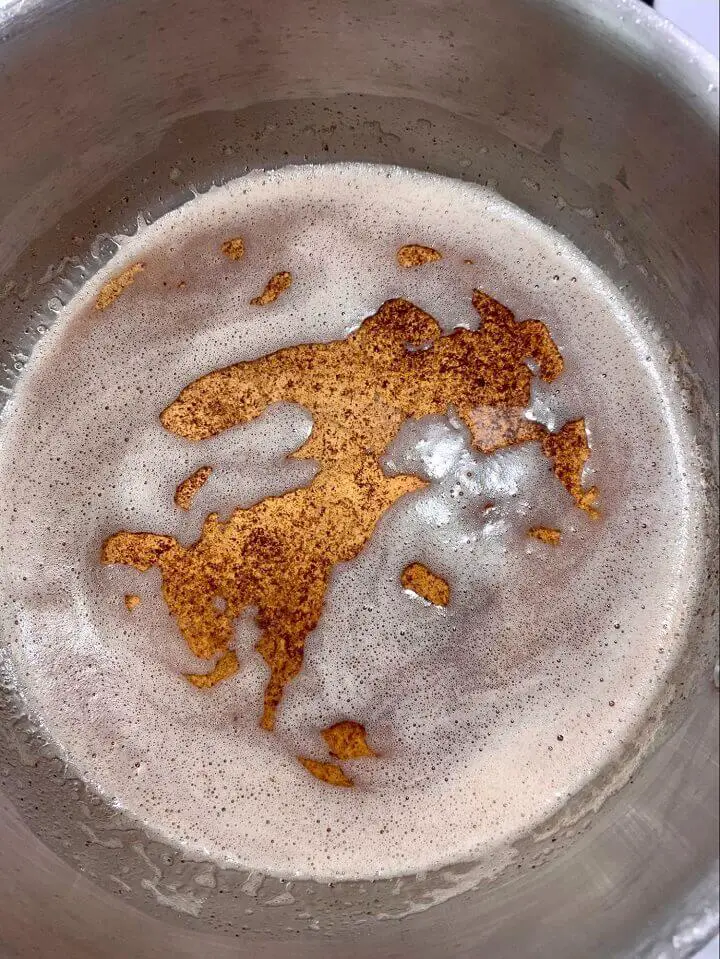
4. You want the browned milk solids to be dark brown and toasty, but not burnt. You will know it is burnt by how the clarified butter smells. Once the milk solids are dark and toasty, but not burnt, turn off the heat.

5. Layer a few paper towels or some cheesecloth inside a fine-mesh strainer set over a bowl. Pour the ghee and milk solids into the paper towel-lined strainer and allow the ghee to strain away from the milk solids.
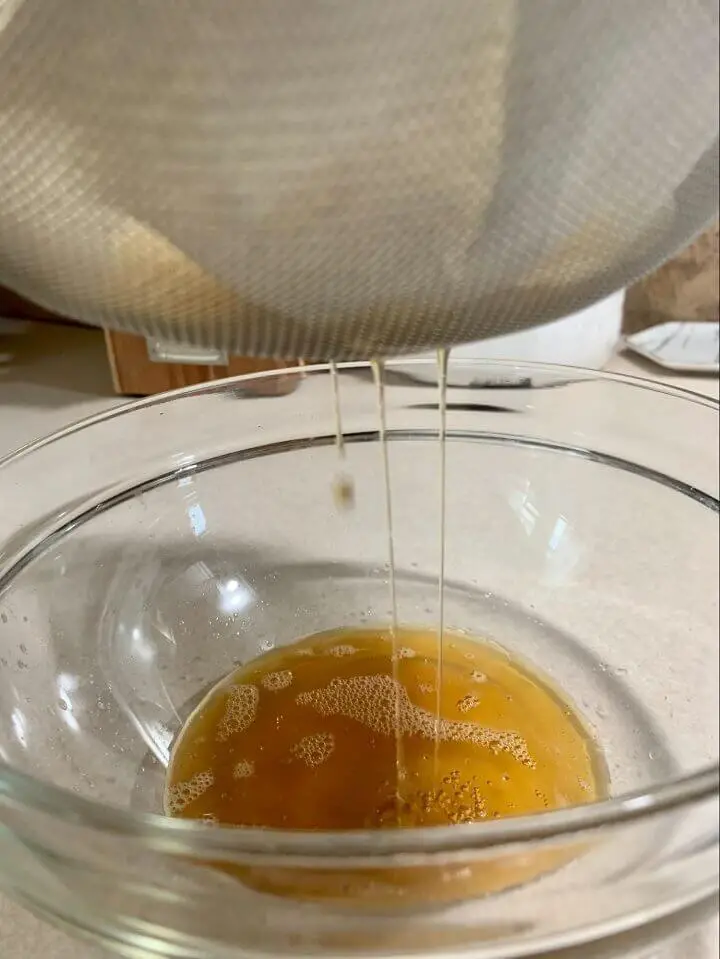
6. Discard the paper towels and transfer the ghee into a mason jar or airtight container. The ghee should be stored away from any moisture to ensure its lastability.
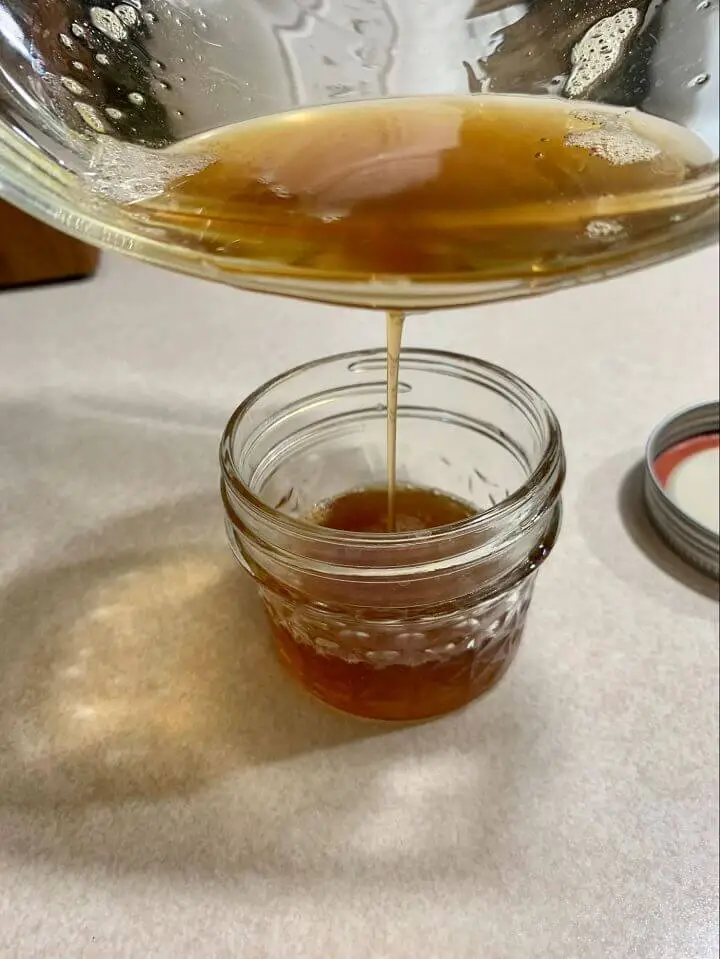
7. Pour into a mason jar or airtight container.
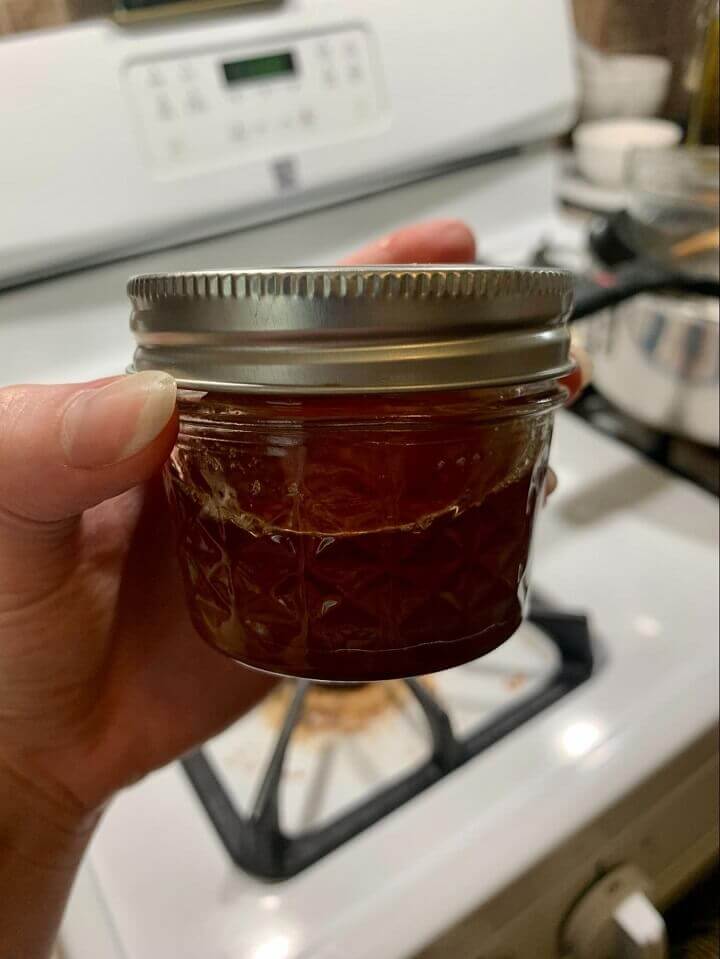
8. Store your covered ghee in a place with a stable temperature.
Why is Ghee Great to Have in the Pantry?
Ghee is a fantastic fat to cook with. As stated before, ghee (or clarified butter) has a very high smoke point. This means that ghee can be heated up to 400 degrees without burning. Due to these reasons, you will often see ghee used in grilling or searing recipes.
For many recipes, ghee is the first ingredient. A spoonful of ghee can be used the same as butter or olive oil in any recipe, especially for sauteing. You can also make a roux using ghee or use it as a binder on the outside of grilled meats.
Ghee will allow any seasonings or spices to adhere to the piece of meat without burning on the grill. Use ghee as you would any other fat with a high smoke point.
All in all, the best reason to keep ghee around is for its amazing flavor. Ghee is toasty, nutty, and buttery. It has all of the flavors of butter, but can be used in so many more recipes. You can use ghee in almost any dish, much like Indian and Middle Eastern cooking. If you’ve ever wondered why Indian food is so incredible, you can thank ghee!
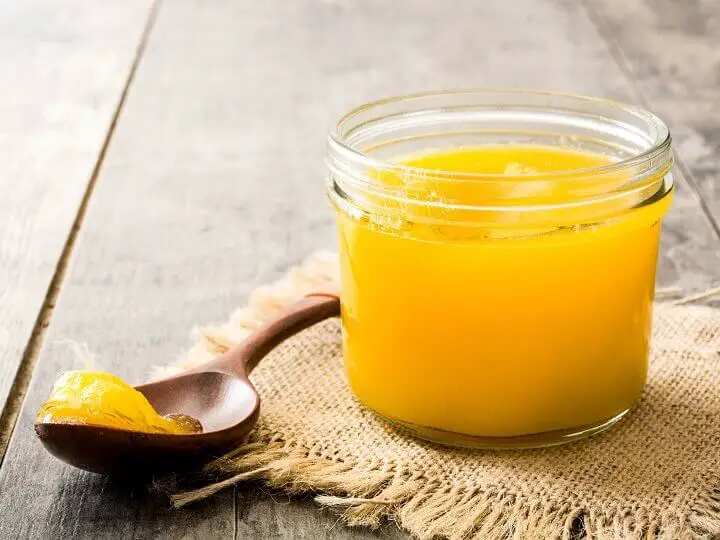
How Long is Ghee’s Shelf Life?
The internet provides conflicting information on how long ghee actually lasts. Some sources say to store it at a stable temperature for one month. Others say that ghee will last years when stored properly. What is the truth?
As long as ghee is stored at a stable temperature, it will last at least one year. Some sources say that ghee will last multiple years, but proceed with caution. Unless your jar of ghee is gigantic, you will likely use your ghee well before its expiration date.
If you purchase ghee at the store and it has an expiration date, the ghee will likely last beyond that expiration date. If you are unsure if your ghee is still okay to eat, there are steps you can take to check its freshness.
How to Tell if Ghee is Past its Prime
Like most foods, ghee can spoil. There are a few steps to take to ensure your ghee is still safe to eat or if it’s past its prime.
Here are some tell-tale signs that your ghee is old:
- Color – if the ghee looks off in color, especially from when it was first canned, it is likely rancid. Ghee past its prime will often take on a milky white color and will taste sour.
- Smell – give your ghee the old-fashioned sniff test to see if you detect any off odors. If so, it’s time to throw the ghee away.
- Mold – mold will only grow if the ghee jar has not been sealed properly. If this happens, discard the ghee.
- Muted Flavor – even if your ghee does not smell or exhibit mold, it may just be a few years old. Ghee will consistently lose flavor as it ages, so if your ghee is not as flavorful as it once was, it’s time to make a new batch.
How to Properly Store Ghee
Since ghee is 100% milkfat, it is a shelf-stable product. This means it can be stored at room temperature, much like coconut oil. Be sure that the lid is secured tightly and that the jar is stored in a pantry or cabinet away from direct sunlight.
You can also store ghee in the freezer. It’s recommended to store ghee in individual portions since it can be hard to separate a portion from a solid block of ghee. This will allow your ghee to last for years.
Making homemade ghee is economical, delicious, and super simple. All you need is a pan and a stick of butter to create this delicious fat. Once it is made, ghee will add tons of toasty rich flavor to all of your cooking.
Not only that, but it is a shelf-stable product that lasts a very long time in the right conditions. Experiment with your cooking and try making homemade ghee today!
Like this post? Don't Forget to Pin It On Pinterest!



